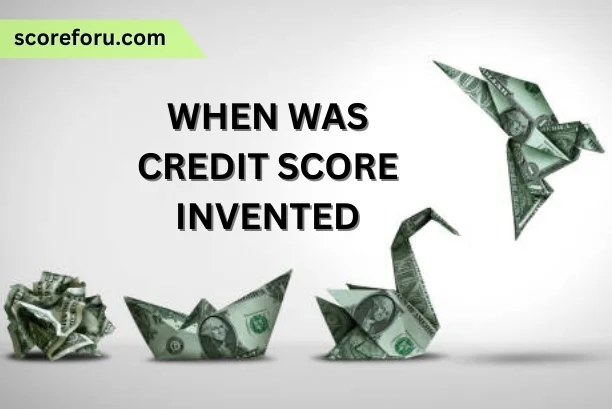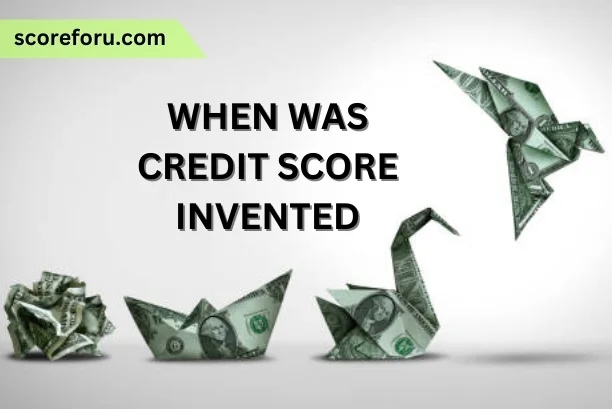The concept of a credit score was first introduced in 1956. Bill Fair and Earl Isaac created the FICO score system in 1989. “When was Credit Score Invented”
Understanding your credit score is crucial in today’s financial landscape. A credit score can open doors to loans, credit cards, and lower interest rates, or it can be a barrier to accessing even basic financial services. Created over a half-century ago, the credit score has become an essential metric for financial institutions to assess an individual’s creditworthiness.
The FICO scoring model, introduced by Fair Isaac Corporation, revolutionized this process by standardizing credit scoring. It helps lenders quickly make informed decisions based on an individual’s credit history. Now, with just a few clicks, banks and other financial entities can determine the risks of lending, ensuring a streamlined approach to credit management. Knowing your score is the first step towards financial literacy and planning for a stable economic future.

Birth Of Credit Scoring
The story of credit scoring is fascinating. It began way before computers did the math. Let’s dive into its history. We start long ago, with how people first judged if someone could be trusted with money.
Earliest Forms Of Creditworthiness Assessment
Early traders and lenders used a simple method.
- Personal Knowledge: They relied on personal reputation.
- Community Bonds: Local bonds made trust easier.
- Ledger Entries: Written logs of transactions helped too.
As communities grew, though, these methods weren’t enough.
From Ledger To Algorithm: A Transition
A big change came in the 20th century. Banks needed a better system.
| Year | Milestone |
|---|---|
| 1950s | Statistical models begin to emerge. |
| 1989 | The FICO score revolutionizes lending. |
With FICO, credit scores became a numerical representation of trust.
Algorithms now decide who gets money and who doesn’t.

Credit: www.amazon.com
The Pioneering Years
The history of the credit score is a tale of innovation and foresight. In the mid-20th century, a revolutionary system emerged. It changed how lenders assessed creditworthiness. This period marked the birth of the credit score. Trailblazers set the stage for modern finance.
Bill Fair And Earl Isaac: Credit Scoring Visionaries
In 1956, two men, Bill Fair, an engineer, and Earl Isaac, a mathematician, changed lending forever. They saw a problem. Lending decisions were slow and inconsistent. Their solution: a statistical approach to predict lending risk. They believed that computers could improve lending. They were right.
The Formation Of Fico And Its Early Models
Fair Isaac and Company (now FICO) began in 1956. The company introduced its first credit scoring system in the late 1950s. Early models were rudimentary. They still enhanced loan decision-making. Lenders could now score borrowers quickly and fairly.
Pioneers like Fair and Isaac laid the groundwork. Their work revolutionized the lending industry. The credit score became a cornerstone of finance. It remains so today. Its ongoing evolution continues to shape the financial landscape.
Credit Scoring Takes Flight
As the economic skies broadened post-World War II, the concept of credit scoring rapidly gained momentum. This transformative approach to evaluating creditworthiness was about to revolutionize the financial industry. Pioneered by engineer Bill Fair and mathematician Earl Isaac in the 1950s, the credit score would soon become a cornerstone of consumer finance. Let us explore how this innovation reshaped the lending landscape and improved the gears of credit and loan decisions.
Adoption By Lenders And Financial Institutions
Recognizing the efficiency and objectivity of credit scoring, banks and credit institutions quickly integrated this method into their processes. It enabled faster, data-driven decisions, diminishing the reliance on personal judgment. This shift not only refined risk assessment but also streamlined the lending mechanism, making it transparent and scalable. With widespread adoption, credit scores started powering the engines of financial institutions across the globe.
- Faster loan approval processes
- Reduction in subjective bias
- Consistency in credit decisions
Impact On Consumer Lending Practices
For consumers, credit scores illuminated a clear path to understanding their financial footing. The clear-cut score provided a measurable goal for those aspiring to improve their financial health. Lenders were now empowered to offer credit products suited to diverse consumer profiles. This pivot laid the foundation for a more dynamic and inclusive credit system, making financing accessible to a broader audience.
Lending practices saw transformative changes:
| Before Credit Scoring | After Credit Scoring |
|---|---|
| Lengthy application reviews | Swift credit assessments |
| Manual risk analysis | Automated risk profiling |
| Exclusive credit offerings | Inclusive financing options |
Evolving Methodologies
The evolution of credit score methodologies is a fascinating trek through history. Credit scores as we know them did not pop up overnight. Instead, they are the result of a steady evolution, shaped by advances in technology and financial understanding. This journey reflects our society’s growing need for a reliable system to evaluate creditworthiness. Let’s delve into how these methodologies have transformed over time.
Technological Advances Shaping Credit Analysis
Technology revolutionized credit scoring. In the late 20th century, computers began to play a pivotal role. They enabled faster data processing and complex algorithms. This shift offered more accurate risk assessments. Early punch card systems gave way to sophisticated software. These tools analyze vast amounts of data rapidly. Advanced analytics predict borrowing behaviors with greater precision. This tech surge led to credit scores becoming a vital financial metric.
- Massive data processing capabilities allowed for more comprehensive credit histories.
- Machine learning algorithms enhance score accuracy by identifying patterns in data.
- Automation brought consistency and efficiency to credit reporting.
The Introduction Of Other Scoring Models
Competition sparked innovation. FICO scores dominated for years. Later, VantageScore emerged. This model offered a different perspective on creditworthiness. It considered alternative data like rent and utility payments. Other custom models cater to specific industries. For instance, automotive finance uses scores that focus on car loan repayment histories. These models offer a more tailored approach to credit scoring.
| Model | Focus |
|---|---|
| FICO | General Creditworthiness |
| VantageScore | Broader Data Set |
| Industry-Specific | Targeted Credit Histories |
This diversification in scoring models means consumers and lenders have more tools at their disposal. Different models suit different needs. They ensure a more fair and personalized credit analysis. The resulting ecosystem offers a better, nuanced understanding of consumer credit risk.
The Global Spread
Imagine a system that understands your financial trustworthiness anywhere on earth. This is the world credit scores created. What started as a simple notion became a worldwide requirement. Here is how credit scoring broadened its horizons, adapting to various cultures and regulations across the world.
From National To International: Credit Scoring’s Reach
The leap from national systems to an international framework was significant. Companies began to understand the value of credit scores in cross-border trade and finance. As businesses expanded, so did the need for a common language of creditworthiness.
American credit score models influenced many countries. FICO, which stands for Fair Isaac Corporation, is one such model. It became a global standard for assessing credit risk. But each country adapted it to fit their financial ecosystem. Now, credit scores play a vital role in global finance. This aids multinational banks, investors, and even small firms in making informed decisions.
The Cultural And Regulatory Adaptations Worldwide
Countries incorporated credit scoring into their systems with unique tweaks. These adaptations reflect cultural values and local laws. For instance, some countries place more emphasis on an individual’s assets rather than their credit usage. Here’s how different regions approach this concept:
- Europe: GDPR introduced new rules for credit data privacy.
- Asia: Countries like Japan value savings patterns, impacting score calculations.
- Africa: Mobile money data is often used to assess creditworthiness in regions with less traditional banking.
In essence, while the core idea of credit scoring remains the same, its application varies. These differences ensure the system is fair and relevant to every individual, no matter where they are. As the world becomes more connected, the evolution of global credit scoring systems continues, bridging financial divides.
Modern Day Challenges And Innovations
The evolution of credit scoring faces a myriad of challenges and embraces continual innovation. Envisioned to assess creditworthiness, these systems now grapple with issues unprecedented in the past. Current complexities demand solutions that harmonize efficiency with ethical use of data.
Privacy, Security, And Ethical Concerns
Credit scores hold immense power over financial futures. This power comes with concerns that demand attention:
- Data Privacy: Personal information must stay private. Regulatory bodies enforce laws like GDPR to protect consumers.
- Security Threats: Credit information is a goldmine for fraudsters. Robust cybersecurity measures are essential.
- Ethical Decision-Making: The use of credit data affects lives. Hence, scoring methods must be fair and non-discriminatory.
Future Trends In Credit Scoring Technology
The horizon of credit scoring technology brings promise of these developments:
| Trend | Impact |
|---|---|
| Machine Learning | Enhances predictive accuracy but raises questions on transparency. |
| Alternative Data | Expands access to credit for those with limited credit history. |
| Blockchain | Ensures secure, decentralized record-keeping and prevents data tampering. |

Credit: penntoday.upenn.edu
Why Credit Scores Were Invented
Credit scores were invented to provide lenders with a standardized and objective measure of an individual’s creditworthiness. Before the advent of credit scores, lenders relied on subjective evaluations, making the lending process less efficient and more prone to biases.
The introduction of credit scores brought about a fair and consistent system, enabling financial institutions to assess the risk associated with lending to a particular individual. By evaluating factors such as payment history, credit utilization, and length of credit history, credit scores provide a reliable snapshot of an individual’s financial responsibility.
This innovation has not only streamlined the lending process. Still, it has also allowed individuals to better understand and manage their financial health, ultimately fostering a more transparent and accessible financial landscape.
When Was Credit Score Invented? Unveiling the Origins of a Financial Milestone
The credit score, a pivotal financial metric that influences lending decisions, was first introduced in 1956 by engineer William R. Fair and mathematician Earl J. Isaac. The two founders established the Fair, Isaac and Company, now known as FICO, with the goal of providing lenders with a standardized tool to assess an individual’s creditworthiness.
The FICO score, which remains one of the most widely used credit scoring models today, revolutionized the lending industry by introducing a systematic and objective approach to evaluating borrowers. Over the decades, credit scoring has evolved, incorporating various factors such as payment history, credit utilization, and length of credit history.
The invention of the credit score marked a significant milestone in the financial world, fostering efficiency, transparency, and fair lending practices.
Frequently Asked Questions For When Was Credit Score Invented
Who Invented The Credit Score System?
The credit score system was invented by engineer Bill Fair and mathematician Earl Isaac, who founded FICO in 1956. They developed the first credit scoring system to help financial institutions assess lending risks more objectively.
When Was The Fico Score First Introduced?
The FICO score, which has become a standard for credit scoring, was first introduced in 1989. It provided lenders a quick, consistent way to evaluate credit risk based on a number scale.
How Did Credit Scores Change The Lending Industry?
Credit scores revolutionized the lending industry by providing a standardized, impartial measure of creditworthiness. This development made loan approvals faster and more equitable, as decisions were based on data rather than personal judgment.
What Factors Influence A Credit Score?
A credit score is influenced by five main factors: payment history, amounts owed, length of credit history, new credit, and types of credit used. Each factor contributes differently to the overall score.
Conclusion
Understanding the origin of credit scores illuminates their immense impact on financial decision-making. Developed in the 1950s, these scores continue to shape lending and borrowing dramatically. As we’ve navigated through history, it’s evident that credit scores have become integral in our daily financial interactions, underscoring their enduring significance in economic systems worldwide.
Keep this history in mind as you manage your personal finances and creditworthiness.
